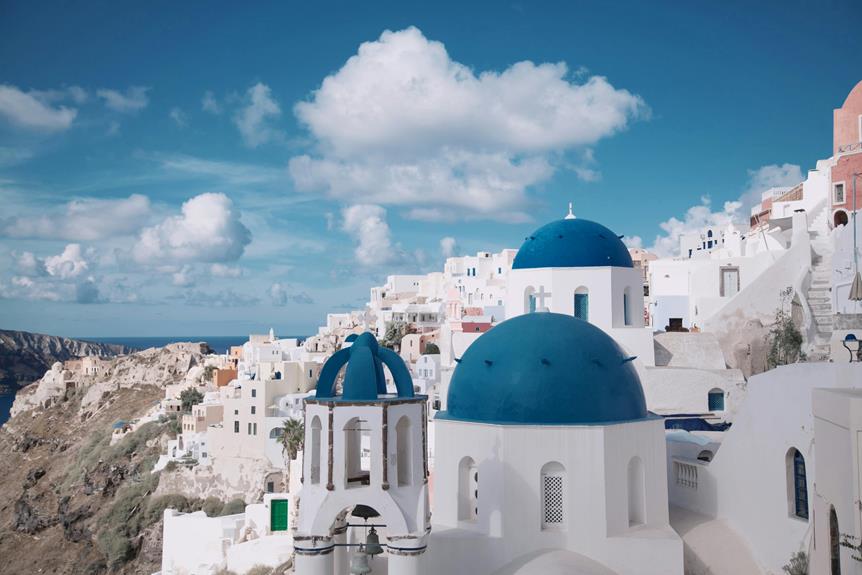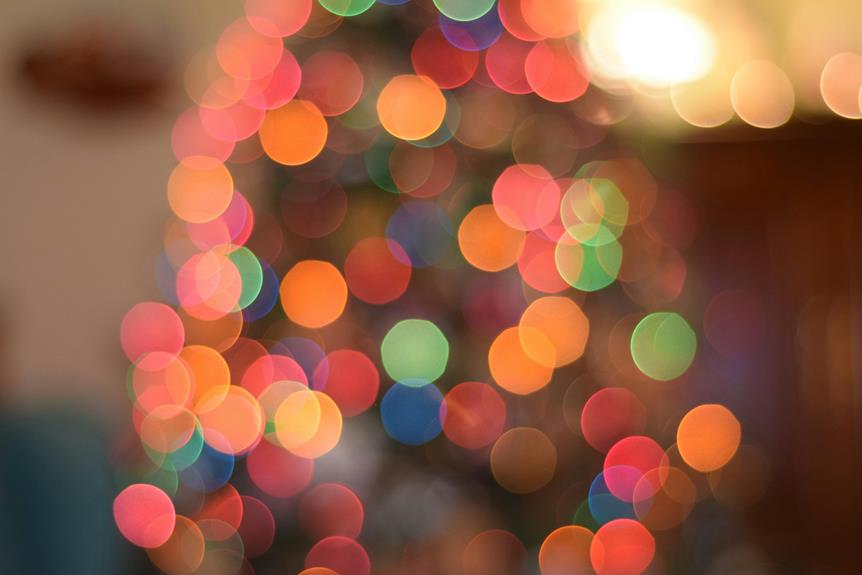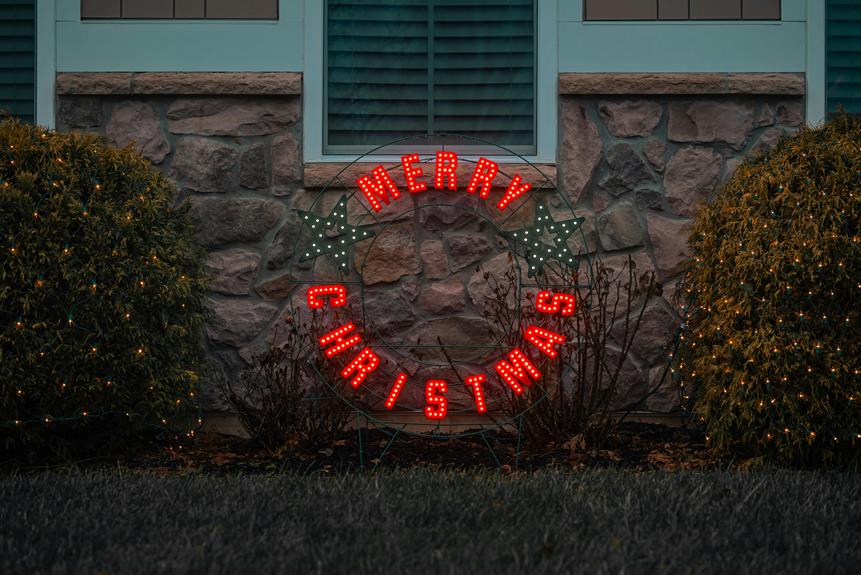As you unwrap the history of Christmas traditions in Europe, you'll find a fascinating story that weaves together ancient pagan festivals, medieval Christian influences, and modern twists. The ancient Germanic festival of Yule, marked by feasting and gift-giving, paved the way for modern Christmas celebrations. Medieval monasteries brought festive illuminations, caroling, and midnight mass to the forefront. Regional traditions emerged, blending cultural influences and folklore. Today, you'll discover vibrant markets, savory flavors, and mythical creatures like Krampus and elves. What's next?
Key Takeaways
- The ancient Germanic festival of Yule predates Christianity, marking the Winter Solstice with feasting, gift-giving, and Pagan Rituals to ensure the sun's return.
- Christianity incorporated many pagan traditions into Christmas celebrations, which took root during the Middle Ages with monastic influence playing a significant role.
- Regional traditions across Europe, shaped by history, geography, and cultural influences, offer a diverse tapestry of customs and practices, such as Germany's festive markets and Italy's panettone.
- Folklore and mythical creatures, like Krampus, elves, and Tomte, significantly contribute to Europe's Christmas traditions, blending pagan and Christian customs.
- Modern twists on heritage, including trendy markets, gastronomic innovations, and sustainable celebrations, are reinvigorating traditional Christmas customs with fresh perspectives and flair.
Ancient Origins of Yule
You can trace the roots of Christmas traditions back to the ancient Germanic festival of Yule, a winter celebration that predates Christianity. This festival marked the Winter Solstice, the shortest day of the year, and was a time of great significance for ancient cultures.
As the days grew shorter, people would come together to feast, exchange gifts, and participate in Pagan Rituals to guarantee the return of the sun. These rituals often involved the lighting of fires and candles, symbolizing the light and warmth of the sun.
You'll find that many of these ancient customs have been incorporated into modern Christmas celebrations. The tradition of gift-giving, for example, originated from the exchange of gifts during Yule.
The use of evergreen trees, holly, and mistletoe also has its roots in ancient Pagan Rituals. As you explore the history of Christmas, you'll discover that many of the traditions you enjoy today have their roots in these ancient winter celebrations.
Medieval Roots of Christmas
As Christianity spread throughout Europe, the early church fathers sought to supplant the existing pagan festivals with a Christian holiday, and Christmas began to take shape during the Middle Ages.
You might be surprised to learn that it was during this time that many of the traditions we associate with Christmas today took root.
Monastic influence played a significant role in shaping Christmas celebrations. Monasteries became centers of festive activity, with monks decorating their chapels and singing hymns.
The monks also brought a sense of joy and festivity to the holiday, which was previously marked by solemnity and penance.
Some of the medieval traditions that still resonate with us today include:
- Festive Illuminations: Candles and lanterns lit up homes and churches, symbolizing the light of Christ.
- Midnight Mass: A special mass was held at midnight, marking the birth of Jesus.
- Feasting and Gift-Giving: Monasteries would host lavish feasts, and gifts were exchanged as a symbol of goodwill.
- Caroling: Monks would go from door to door, singing Christmas hymns and spreading cheer.
As you celebrate Christmas, remember the medieval roots that have shaped this holiday into what it's today.
Regional Traditions Emerge
Regional traditions began to flourish across Europe, weaving a rich tapestry of diverse customs and practices.
As you explore the continent, you'll discover that each region has its unique twist on Christmas celebrations. Local variations emerge, shaped by historical events, geography, and cultural influences.
In Germany, you'll find festive markets and glühwein, while in Italy, you'll be treated to panettone and la Befana.
Cultural fusion is also evident, as different ethnic groups brought their traditions to the European table.
The Nordic countries, for instance, blended their pagan winter solstice celebrations with Christian customs. Similarly, the Celts in Scotland and Ireland infused their festivals with ancient rituals and myths.
As you dig deeper, you'll notice how regional traditions have evolved over time, influenced by trade, migration, and conquest. You might find yourself sipping hot chocolate in Spain, dancing around the Christmas tree in Denmark, or enjoying a festive meal with family in Poland.
Whatever the local flavor, Christmas in Europe is a true reflection of its rich cultural heritage.
Folklore and Mythical Creatures
What role do folklore and mythical creatures play in shaping Europe's Christmas traditions? As you explore the rich cultural heritage of Europe, you'll discover that these fantastical beings have a significant impact on the festive season.
From the North Pole to the Alpine regions, mythical creatures have been an integral part of Christmas folklore for centuries. They add a touch of magic and wonder to the holiday season, making it even more enchanting for children and adults alike.
Krampus, the half-goat, half-demon creature, is said to punish naughty children during the festive season, instilling fear and good behavior in equal measure.
Elves, with their mischievous habits, are often depicted as Santa's helpers, busy making toys and spreading joy in the North Pole.
Tomte, small, bearded creatures from Scandinavian folklore, are believed to bring good luck and protection to homes during Christmas.
La Befana, an Italian witch-like figure, is said to deliver gifts to children on January 6th, the Epiphany.
These mythical creatures add a unique flavor to Europe's Christmas traditions, making the holiday season even more fascinating and entertaining.
Christmas Markets and Feasts
Explore Europe's festive streets and you'll stumble upon vibrant Christmas markets, filled with the enticing aromas of traditional delicacies and handmade crafts.
As you wander through the stalls, you'll discover a Winter Wonderland of festive flavors, from sweet gingerbread to savory sausages.
Indulge in a warm mug of glühwein or hot chocolate to keep you cozy as you browse the unique gifts and decorations on offer.
In Germany, try a traditional lebkuchen, a soft, spiced gingerbread cookie, or sample some stollen, a rich fruitcake.
In Austria, don't miss the delicious vanillekipferl, a crescent-shaped cookie filled with vanilla and topped with powdered sugar.
And in France, be sure to try some bûche de Noël, a log-shaped cake made with chocolate and buttercream.
Whatever your taste, Europe's Christmas markets are sure to delight your senses and leave you feeling merry and bright.
Modern Twists on Heritage
As you explore deeper into Europe's festive culture, you'll discover how modern twists are breathing new life into traditional heritage, reinvigorating time-honored customs with fresh perspectives and innovative flair. This Contemporary Fusion of old and new is revitalizing Christmas celebrations across the continent.
From trendy pop-up markets to high-tech light displays, Europeans are finding creative ways to honor their heritage while appealing to modern tastes. This Cultural Revival isn't only preserving traditional practices but also making them relevant to new generations.
Some exciting examples of this fusion include:
- Gastronomic innovations: Chefs are reimagining traditional holiday dishes with modern flavors and ingredients, creating unique culinary experiences.
- Sustainable celebrations: Eco-friendly decorations, energy-efficient lights, and environmentally conscious gift-giving are becoming increasingly popular.
- Digital storytelling: Interactive exhibits and immersive experiences are bringing Christmas folklore to life in fresh and engaging ways.
- Interfaith celebrations: Communities are coming together to share and learn from each other's holiday traditions, promoting unity and understanding.
As you immerse yourself in Europe's vibrant Christmas culture, you'll find that these modern twists are enriching the holiday season, making it a truly unforgettable experience.
Frequently Asked Questions
What's the Significance of Mistletoe in European Christmas Traditions?
You might've wondered, what's the deal with mistletoe? It's all about Mistletoe Magic, where ancient rituals meet Romantic Rituals. You see, in ancient Europe, mistletoe was believed to possess mystical powers, sparking love and fertility, making it a festive flirting must-have!
Are Christmas Trees a German Invention or a Nordic Tradition?
You're wondering if Christmas trees originated in Germany or Nordic countries? Evergreen Legends say it's a mix! Forest Origins point to 16th-century Germany, but Nordic cultures also revered evergreens; you'll find the truth is a blend of both influences.
Why Do Some European Countries Exchange Gifts on January 6th?
"You're not alone in wondering why some Europeans exchange gifts on January 6th – it's a tradition that's been around for centuries! In Eastern Orthodox countries, this date marks the Epiphany, where the Holy Kings arrived, bringing gifts to baby Jesus, and you're still reaping the benefits today!"
What's the History Behind Boxing Day in European Cultures?
You're wondering about Boxing Day's history in European cultures. It originated in the UK, where servants received gifts on the day after Christmas, known as Boxing Day. Its Sporting Origins date back to medieval times, while Charity Roots stem from Victorian-era almsgiving.
How Did the Tradition of Singing Christmas Carols Originate?
You'll discover that singing Christmas carols originated in ancient pagan festivals, where people would sing during winter solstice celebrations. Later, Christians adopted this tradition, and iconic carols like "Silent Nights" emerged, becoming an integral part of Carol Origins and festive cheer.
Conclusion
You've survived the whirlwind tour of Europe's Christmas traditions, from Yule's ancient magic to modern-day commercial chaos.
As you stumble back to your festive feast, visions of sugarplums and Krampus's horns dance in your head.
Meanwhile, your wallet weeps, mourning the loss of its hard-earned cash to tacky trinkets and overpriced mulled wine.
Congratulations, you've been fully initiated into the cult of Christmas consumerism – now go forth and spread the cheer (and debt)!


